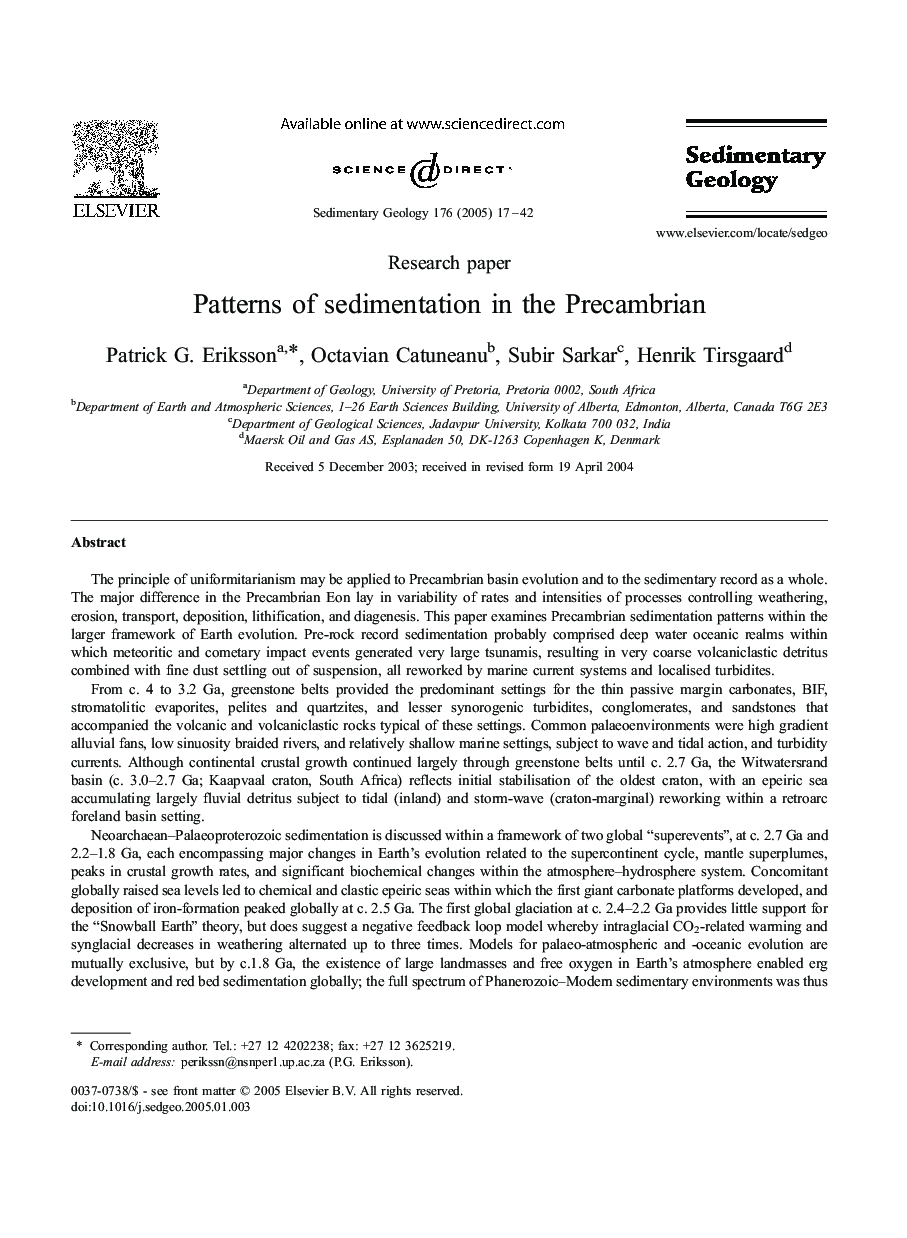| Article ID | Journal | Published Year | Pages | File Type |
|---|---|---|---|---|
| 9526209 | Sedimentary Geology | 2005 | 21 Pages |
Abstract
Neoarchaean-Palaeoproterozoic sedimentation is discussed within a framework of two global “superevents”, at c. 2.7 Ga and 2.2-1.8 Ga, each encompassing major changes in Earth's evolution related to the supercontinent cycle, mantle superplumes, peaks in crustal growth rates, and significant biochemical changes within the atmosphere-hydrosphere system. Concomitant globally raised sea levels led to chemical and clastic epeiric seas within which the first giant carbonate platforms developed, and deposition of iron-formation peaked globally at c. 2.5 Ga. The first global glaciation at c. 2.4-2.2 Ga provides little support for the “Snowball Earth” theory, but does suggest a negative feedback loop model whereby intraglacial CO2-related warming and synglacial decreases in weathering alternated up to three times. Models for palaeo-atmospheric and -oceanic evolution are mutually exclusive, but by c.1.8 Ga, the existence of large landmasses and free oxygen in Earth's atmosphere enabled erg development and red bed sedimentation globally; the full spectrum of Phanerozoic-Modern sedimentary environments was thus present on Earth. A third postulated “superevent” at c. 0.8-0.6 Ga essentially recreated conditions experienced at c. 2.2-1.8 Ga, with, additionally, at least three global refrigeration events.
Keywords
Related Topics
Physical Sciences and Engineering
Earth and Planetary Sciences
Earth-Surface Processes
Authors
Patrick G. Eriksson, Octavian Catuneanu, Subir Sarkar, Henrik Tirsgaard,
